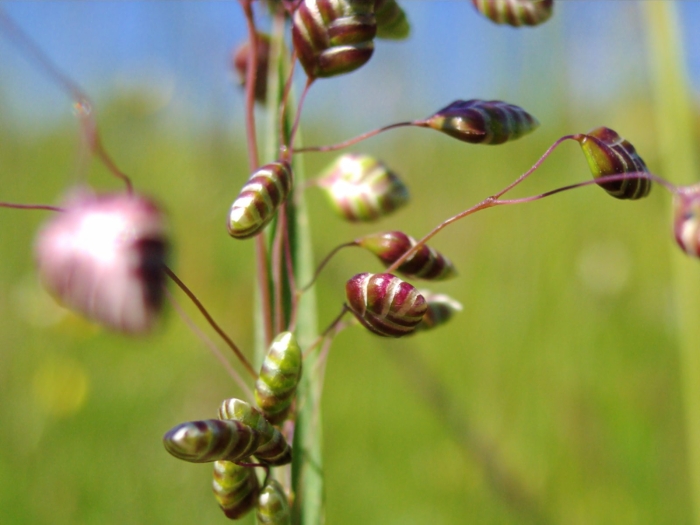Quaking Grass
(Briza media)
Quaking Grass (Briza media)
/
/

Guido Gerding
CC BY-SA 3.0
Image By:
Guido Gerding
Recorded By:
Copyright:
CC BY-SA 3.0
Copyright Notice:
Photo by: Guido Gerding | License Type: CC BY-SA 3.0 | License URL: http://creativecommons.org/licenses/by-sa/3.0/ | Uploader: XN | Publisher: Wikimedia Commons | Title: XN_Briza_media_00.jpg | Notes: Photo of ''[[Caesalpinia pulcherrima]]'' Desert Demonstration Garden in [[Las Vegas]], taken October 2003 by [[User:Stan Shebs]] {{GFDL}} |




























































Estimated Native Range
Summary
Briza media, commonly known as Quaking Grass, is a deciduous perennial grass native to a variety of habitats including meadows, grasslands, and open woodlands across Europe, Asia, and North Africa. It typically grows to a height of 2-3 feet (0.6-0.9 meters) and a width of 1-2 feet (0.3-0.6 meters). Quaking Grass is characterized by its delicate, nodding flower heads that appear in early summer, creating a soft, quivering effect in the breeze. The flowers are greenish to purplish, becoming straw-colored as they mature. This grass is valued for its movement in the garden and its textural contrast when planted among other perennials.
Quaking Grass is appreciated for its low maintenance and its ability to thrive in a range of garden settings, including borders, wildflower meadows, and informal areas. It is also used in dried flower arrangements due to the persistent and attractive seed heads. For optimal growth, it prefers full sun but can tolerate partial shade, and it requires well-drained soil. While generally pest and disease free, it can suffer in overly wet conditions. Quaking Grass is not known for aggressive roots or invasiveness, making it a well-behaved garden choice.CC BY-SA 4.0
Quaking Grass is appreciated for its low maintenance and its ability to thrive in a range of garden settings, including borders, wildflower meadows, and informal areas. It is also used in dried flower arrangements due to the persistent and attractive seed heads. For optimal growth, it prefers full sun but can tolerate partial shade, and it requires well-drained soil. While generally pest and disease free, it can suffer in overly wet conditions. Quaking Grass is not known for aggressive roots or invasiveness, making it a well-behaved garden choice.CC BY-SA 4.0
Plant Description
- Plant Type: Grass
- Height: 2-3 feet
- Width: 1-1.5 feet
- Growth Rate: Moderate
- Flower Color: N/A
- Flowering Season: Spring, Summer
- Leaf Retention: Evergreen
Growth Requirements
- Sun: Full Sun
- Water: Medium
- Drainage: Medium, Fast
Common Uses
Drought Tolerant, Groundcover, Low Maintenance
Natural Habitat
Native to meadows, grasslands, and open woodlands across Europe, Asia, and North Africa
Other Names
Common Names: Perennial Quaking Grass, Quaking Grass, Totter Grass, Cow-Quake, Didder, Dithering-Grass, Dodder-Grass, Doddering Dillies, Doddle-Grass, Earthquakes
Scientific Names: , Briza media, Briza elatior, Briza media subsp. elatior, Poa media, Briza australis, Briza lutescens, Briza media var. major, Briza media var. albida, Briza media var. lutescens
GBIF Accepted Name: Briza media L.